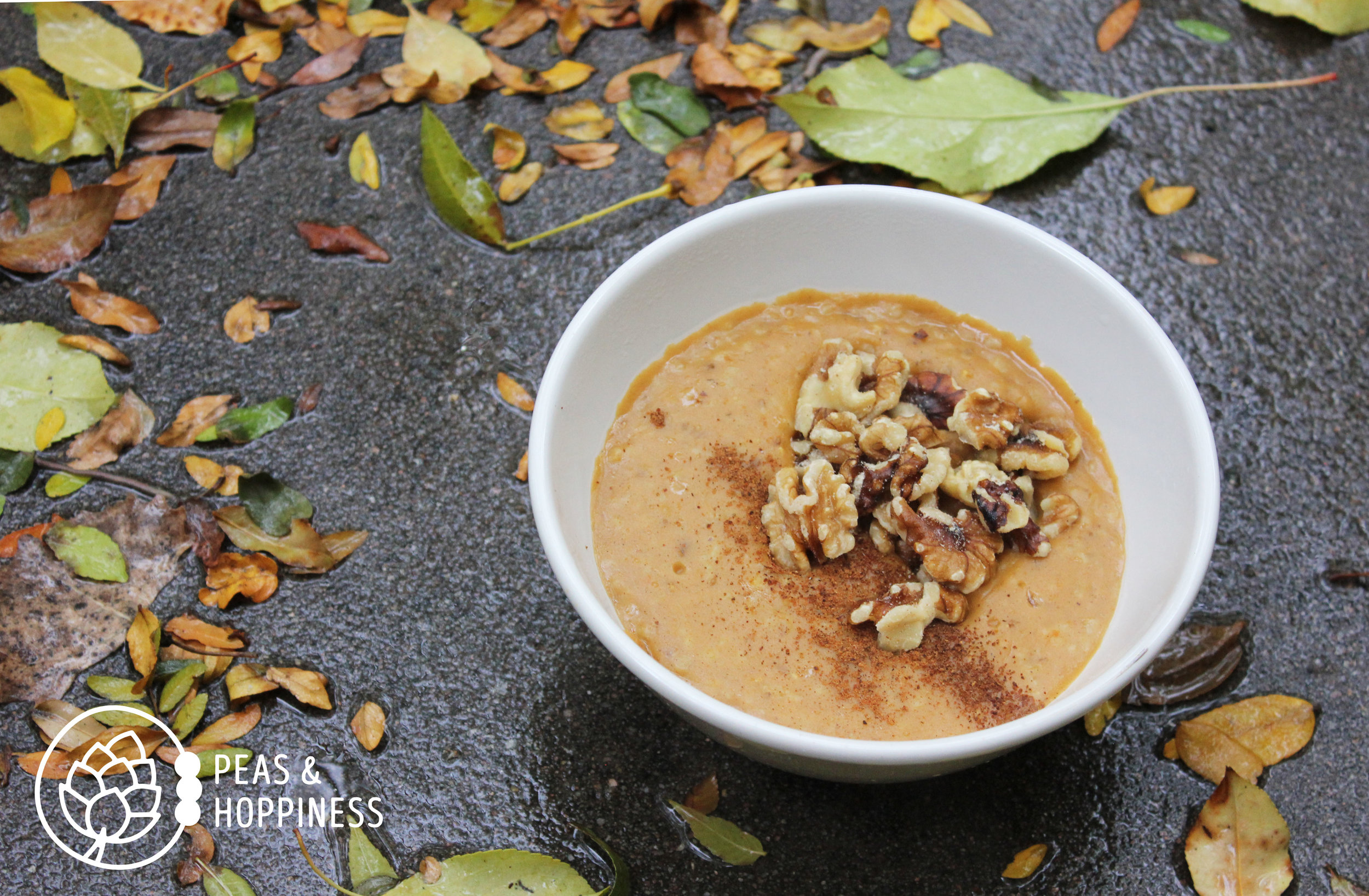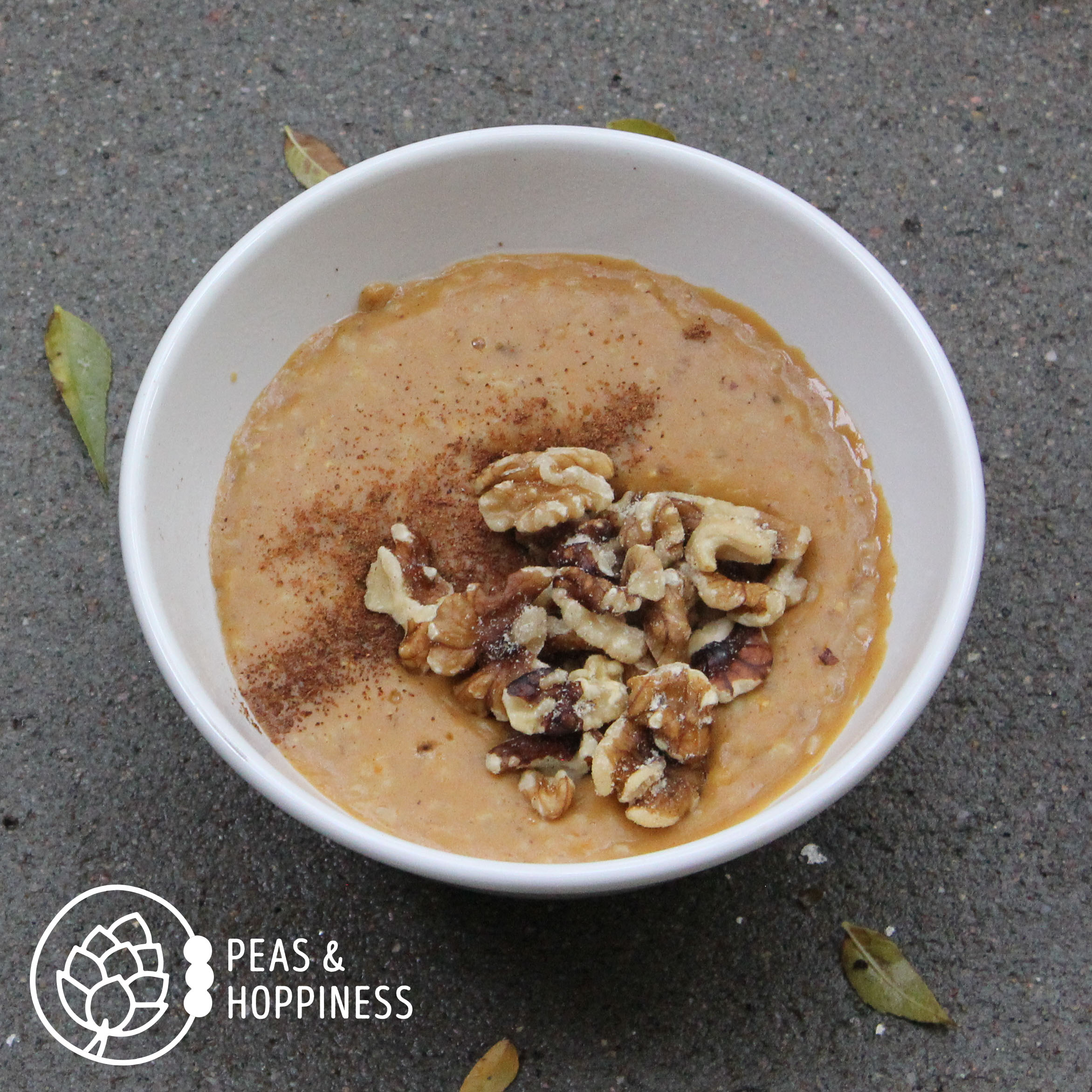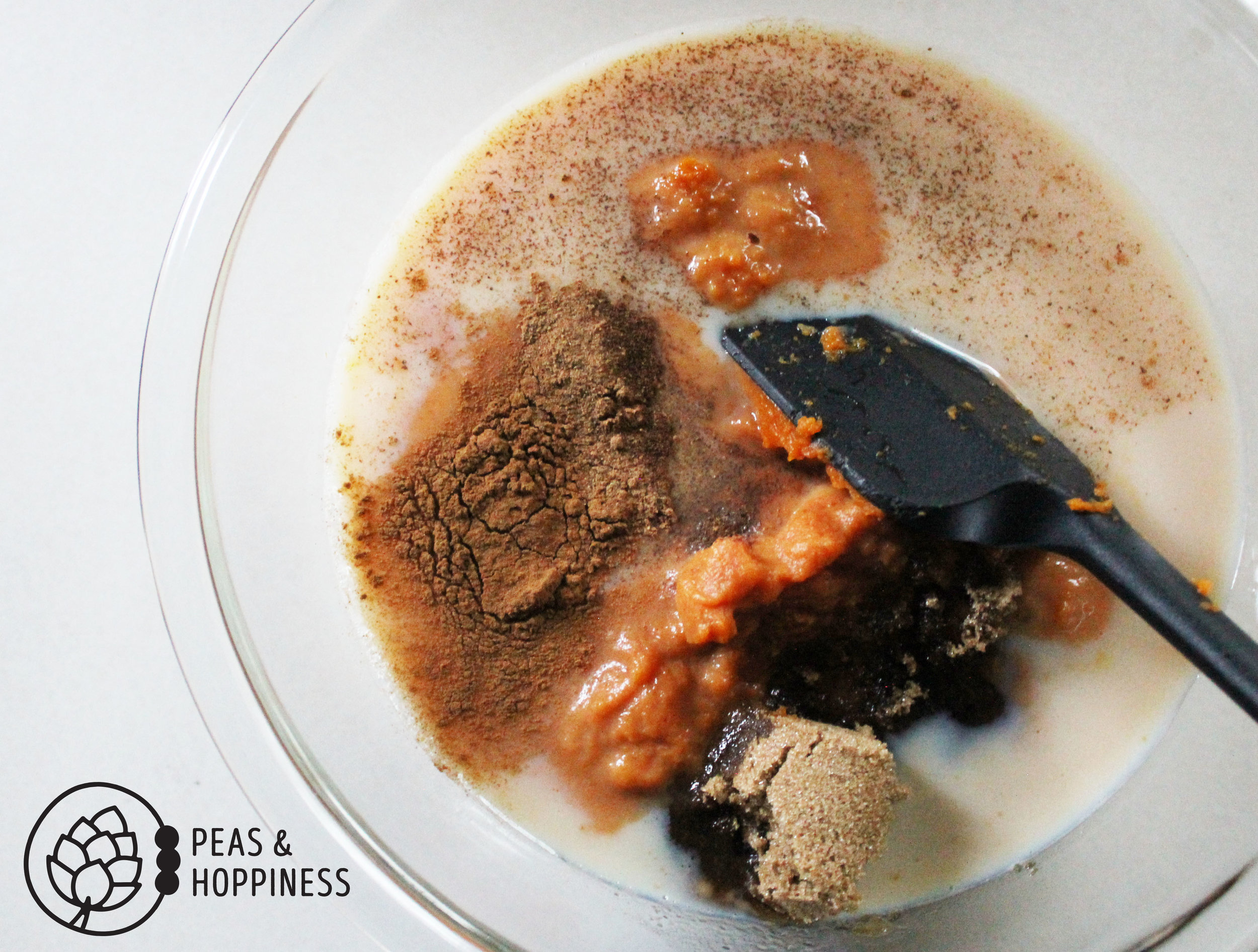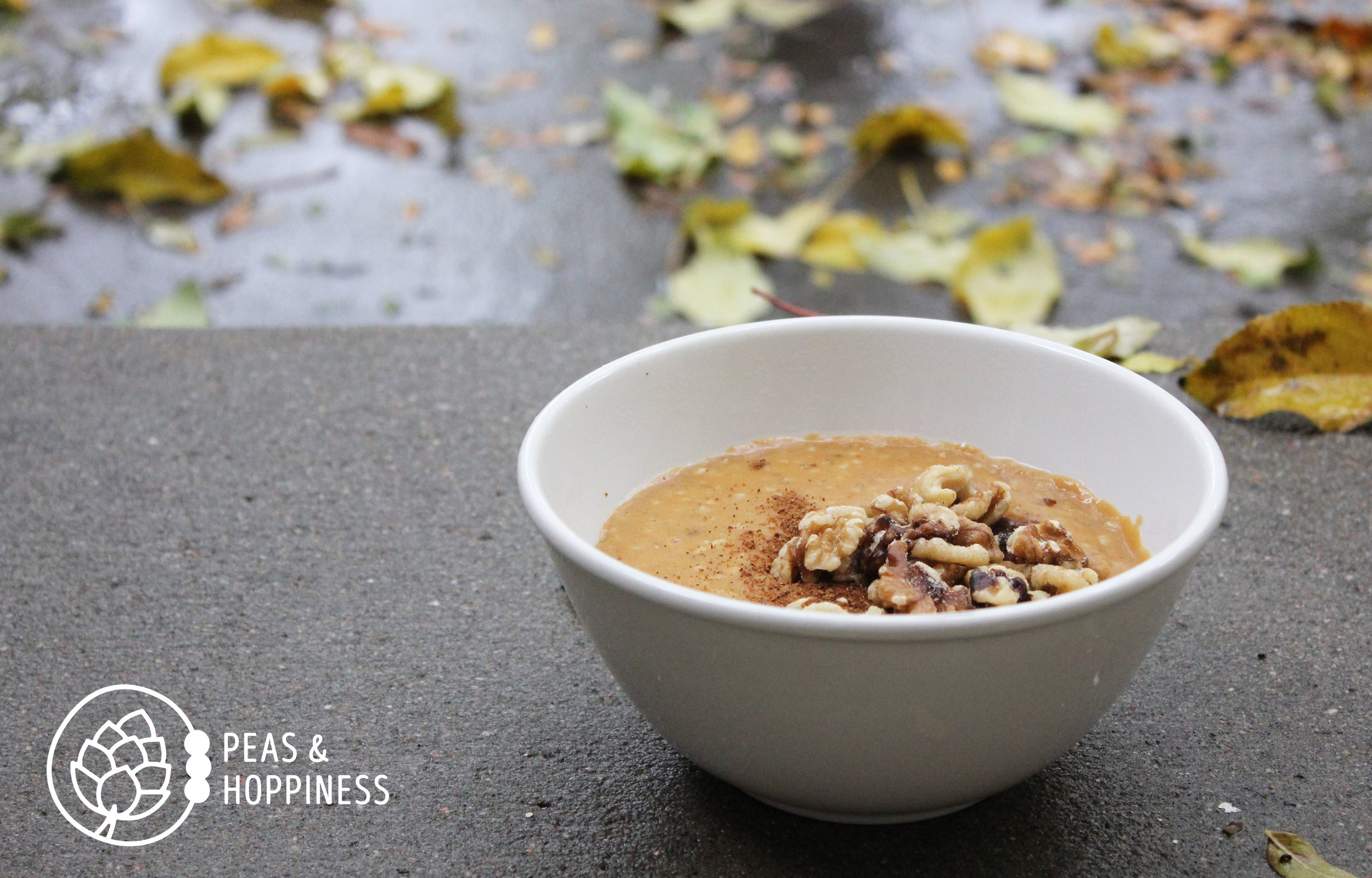
Baby, it’s cold outside! With almost a foot of snow outside, all I really want to do is to curl up on the couch with a good book and cup of hot tea.
Unfortunately, working full-time puts a bit of a damper on those plans during the week. So what’s the next best thing to staying in? Starting my day with a delicious, wholesome bowl of hot cereal. Yes, that’s right: oatmeal.
I love oatmeal in all shapes and flavors, but my favorite is hearty, stick-to-your-bones oatmeal. I’m hungry in the morning.
One of my favorite things about oatmeal is that it is packed with protein. Surprising? That’s because we often forget that grains not only have carbohydrates, but they also contain protein.
Amino Acids: Building Blocks of Proteins
We talked about the building blocks of carbohydrates a few weeks ago. Proteins are similar to carbohydrates in that they are also made of strings of smaller molecules. The building blocks of proteins are called amino acids.

There are 20 amino acids that are combined in different ways and differing amounts to make up all of the proteins we eat. These amino acids, in turn, serve our bodies as hormones, parts of cells, and building blocks for our own muscles (among other things).
Out of the 20 amino acids, nine are considered essential amino acids – meaning that our body cannot synthesize these amino acids and so we must eat them in our diet. The rest our bodies can make – except occasionally in times of severe stress, such as illness or surgery. In these times these amino acids become conditionally essential and need to be included in the diet at this time.
Complete Proteins
Complete proteins get their name because they naturally include all of the nine essential amino acids. You only need about four to eight ounces of these proteins a day to have plenty for your body.
All animal products are complete proteins, including meat, poultry, fish, dairy, and eggs (but you must eat both the yolk and the white). Vegetarian sources of complete proteins include the grains amaranth, buckwheat and quinoa; soy; and seeds like chia and hemp.
Complementary Proteins
Whereas all animal products contain all essential amino acids, most plant-based proteins do not. They may be missing one or more of these important nutrients. So what’s a vegetarian to do? Why, eat a variety, of course!

Grains and legumes (beans/lentils/nuts) are opposite sources of amino acids. Meaning that grains are typically high in certain amino acids that legumes happen to be lacking, but are low in amino acids that legumes tend to contain in larger amounts.
Thus, paring a grain with a legume will give you all nine essential amino acids (and then some). These are called complementary proteins.
The really great thing about complementary proteins is that you don’t necessarily have to eat them at the same time because your body stores a reserve of amino acids. This means if you have whole grain cereal for breakfast and lentils for lunch, your body will use the complementary amino acids from each and you’ll get the nutrition you need.
Here are some example of common (and delicious) examples of complementary vegetarian proteins:
-
Peanut butter on toast
-
Red beans and rice
-
Mujadara (lentils and rice)
-
Black bean enchiladas
-
Hummus and pita
-
Pumpkin steel-cut oats with toasted walnuts
So, in order to start your day off with a hot bowl of delicious protein, let me introduce you to pumpkin steel-cut oats. This recipe makes more than enough to have plenty of leftovers. I like to fix it on a Sunday morning, then enjoy it for breakfast all week long. You can even freeze this in individual servings for a hearty breakfast a few weeks from now. A quick minute in the microwave and it’s just like having made it fresh.

To start, add two cups of steel-cut oats and six cups of water to a large saucepan (2 quart or larger) and bring to a boil. Reduce heat, cover, and simmer for 30 minutes.
Meanwhile, mix together a can of pumpkin, an empty-pumpkin-can-full of skim milk, two teaspoons of cinnamon, and a fourth teaspoon of each nutmeg and ground cloves.
Add pumpkin mixture to oats. Return to a boil, then reduce heat again, cover, and simmer for an additional 30 minutes until oats thicken.

Remove oats from heat and add a teaspoon of vanilla. Serve hot, sweetened with honey or brown sugar, toasted walnuts, and a shake of cinnamon.
Enjoy!
Pumpkin Porridge
Ingredients
-
2 c. steel cut oats
-
6 c. water
-
1 can (14.5 oz) pumpkin
-
2 cups (or 1 empty pumpkin-can-full) skim milk
-
2 tsp. cinnamon
-
1/4 tsp. nutmeg
-
1/4 tsp. ground cloves
-
1 tsp. vanilla
Instructions
-
Add oats and water to large saucepan and bring to a boil. Reduce heat, cover, and simmer for 30 minutes.
-
Meanwhile, mix together pumpkin, milk, and all seasonings except vanilla.
-
Add pumpkin mixture to oats. Return to a boil, the reduce heat again, cover, and simmer for an additional 30 minutes until oats thicken.
-
Remove from heat and add vanilla. Serve with honey or brown sugar, toasted walnuts, and a shake of cinnamon. (Note: nutrition information does not include sugar or nuts)
Serves 8 – Serving Size: 1 cup – Nutrients per serving: 167 calories — 2g total fat — 0g saturated fat — 0g trans fat – 1mg cholesterol — 35mg sodium — 28g total carbohydrates — 5g fiber — 2g sugar — 8g protein